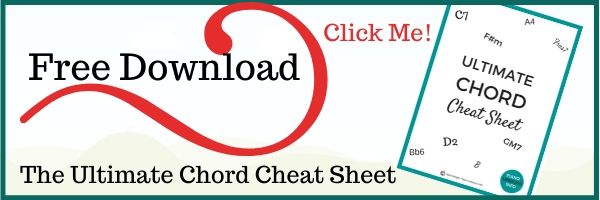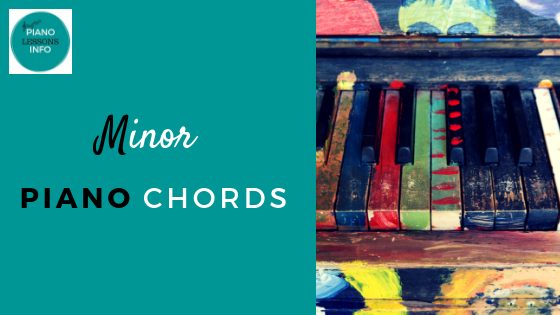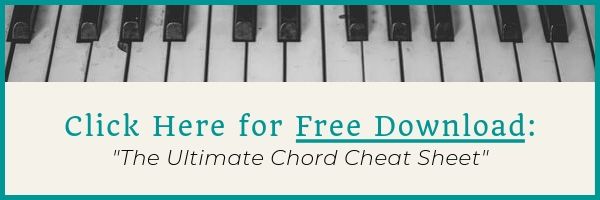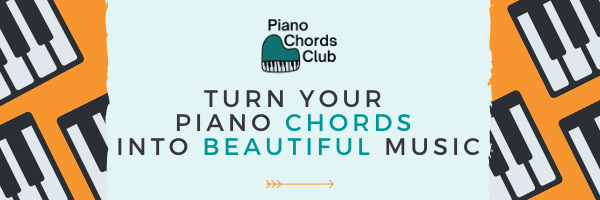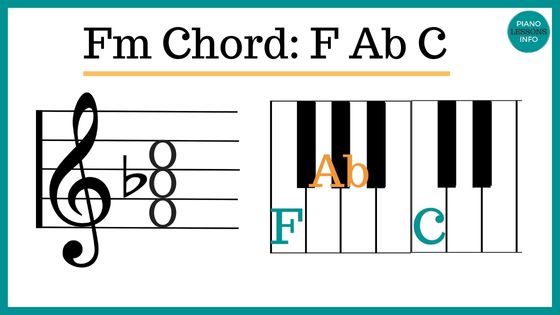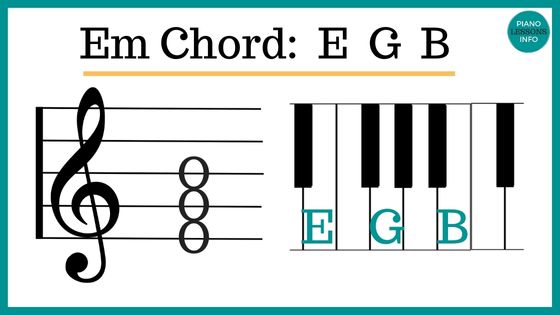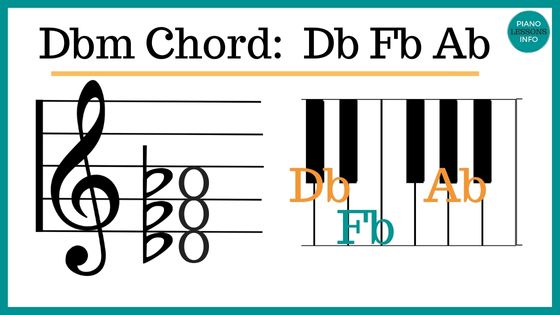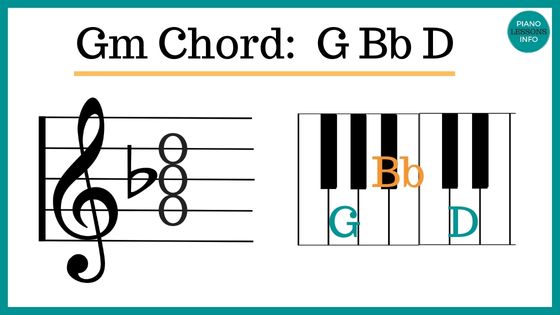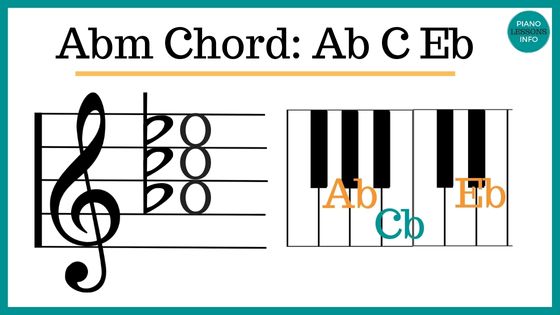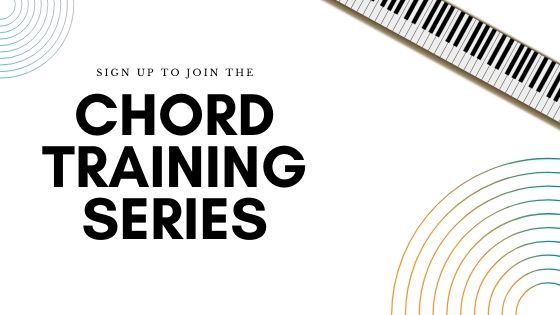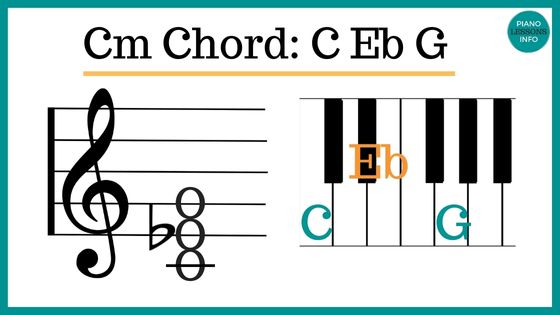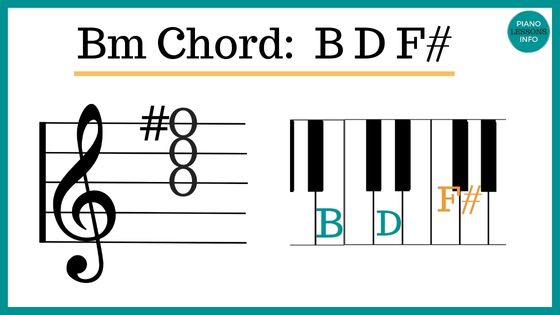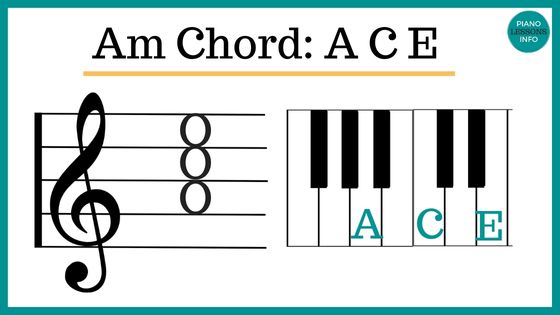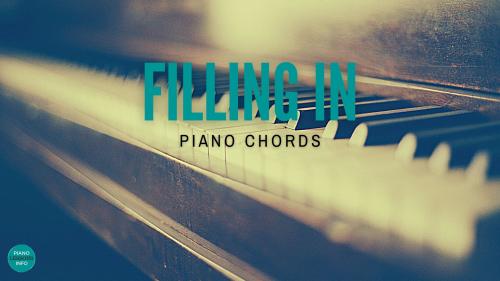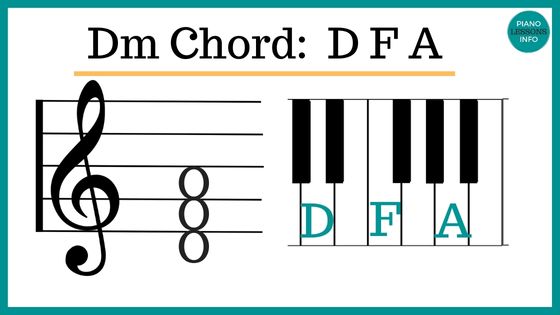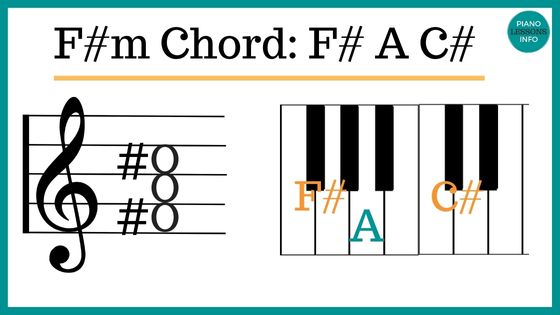C#m Piano Chord: How To Play It
The C#m piano chord is a great one to learn. C#m is a minor chord and has the notes C#, E and G#.
Here, you'll learn:
- how to play C#m
- which fingers to use
- how to play C#m/E
- how to play C#m/G
- the inversions for C# minor
- some C#m chord progression for practice
- and learn which key it's in and more chord theory
C#m Piano Chord Notes
C#m on piano is played on 2 black keys and one white key. The notes of C#m are C#, E and G#.
If you're unsure which keys are which notes, just look at the chord chart below.
C#m is a minor chord (as the small "m" means minor) and pretty common for a minor chord in keys with sharps. So getting to know this chord will be quite helpful for you.
C#m Piano Chord Chart
On this chord chart for C#m, you can see the notes of C#m on the treble clef as well as the piano keyboard.
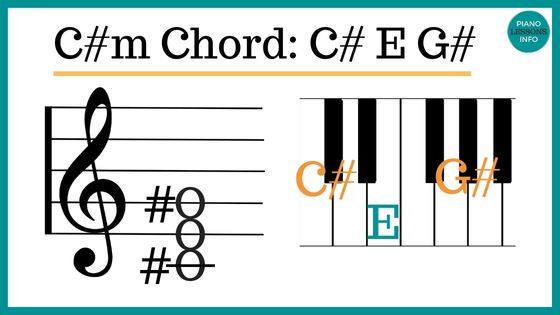
C# is the black note on the left side of the group of two black keys.
G# is the middle black key in the group of three black keys.
How to Play C# Minor Chord
This very short video will show you how to play C#m on piano and you can also hear how it sounds.
C#m Piano Finger Positions
To play the C sharp minor chord, at least in the beginning, you can use the standard finger positions (or fingering) for all major and minor chords.
To play C#m, use fingers 1, 3 and 5. That's your thumb, middle finger and pinkie. And that goes for the right hand as well as the left hand.
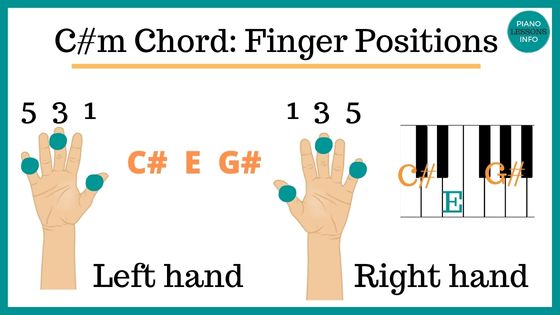
In the beginning, for some it feels strange to use those fingers, especially on a black note, but it's great for your muscle memory to get those finger positions in place.
Later on, you might use different fingers depending on the other chords you are playing around this one.
C#m/E Piano Chord
If you come across a slash chord like C#m/E, this means to play E in your left hand as your lowest note. It's the bass note.
This means you're not playing C# as your bass note anymore, but switching to E.
If you play chords mainly in your left hand, use on of the inversions below so that you have E as the lowest note.
C#m/G# Piano Chord
When you see C#m/G#, it means to play G# as the lowest note in your left hand. G# is your bass note.
This is another type of slash chord. Changing the bass note changes the sound of the chord slightly.
As with C#m/E, if you play chords primarily in your left hand, use the inversions below so that you have G# as the lowest note for C#m/G#.
Inversions for C Sharp Minor Chord
Inversions are standard positions to play a chord in and are very useful to learn. They help you to switch chords quickly and be more flexible with what you're playing.
Here are the inversions for C#m on piano:
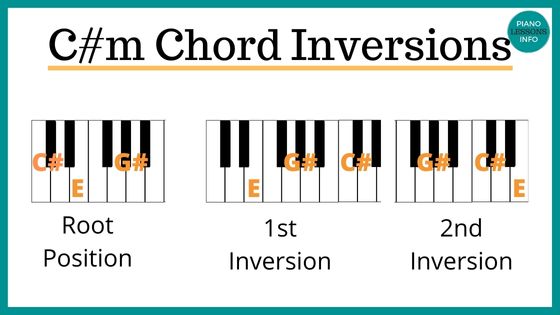
C#m piano chord inversions are:
Root Position: C# E G#
1st Inversion: E G# C#
2nd Inversion: G# C# E
C#m Chord Progressions
Chord progressions can be fun to play and also a great way to practice a new chord.
Here are some great chord progressions to practice for C#m:
C#m Chord Progression 1:
C#m A E B
C#m Chord Progression 2:
C#m E F#m C#m
C#m Chord Progression 3:
E C#m A C#m B
C#m Key
Major and minor keys share a key signature. We call them relative majors or relative minors.
The keys of A major and C sharp minor share a key signature. That means C sharp minor's relative major is A major. This information is useful when finding key signatures but if it's just gone over your head, don't worry, here's what you need to know:
The key signature of C sharp minor is 3 sharps - F#, C#, G#.
This is why you play C# and G# in the C#m chord.
If you need more help understanding key signatures, visit the key signatures page.
Chord Theory For C# Minor Chord
One of the important aspects of the C#m chord is that it can often be named incorrectly as a Dbm chord.
C# and Db are the same note. But they aren't interchangeable. Sharps and flats don't mix.
So if you are playing or writing chords in a key with sharps, you'll be playing C#m. If you were playing in a key signature with flats, then the chord would be Dbm. However, Dbm is pretty rare to find as Db minor is not an actual key (in terms of key signatures).
C sharp major chord and D flat major chord on the other hand, both exist as keys but the same rule applies for not mixing sharps and flats when it comes to chord titles.
The C sharp minor chord itself is built off of the first, third and fifth notes of the C# minor scale.
If you need to look up more chords, visit the Piano Chord Charts page or download your own copy below.
Free Download:
Ultimate Chord Cheat Sheet
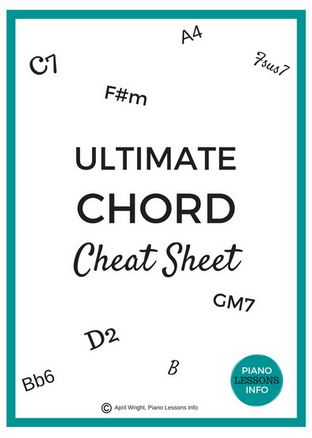
Subscribe below and get free access to the (printable) Ultimate Chord Cheat Sheet.
Recent Articles
-
Piano Notes Chart
Nov 20, 23 10:21 PM
Find a piano notes chart for treble clef and bass clef notes as well as the different types of notes. -
D Chord on Piano + Diagram, How To & Theory
Oct 24, 23 12:20 AM
Learn how to play the D chord on piano with diagram, fingering, D/A, D/F# and a theory explainer. -
Diminished Piano Chords: Chart & How to Make Them
Oct 09, 23 09:23 PM
Learn the different diminished piano chords and how to make them. Here you'll find both a diminished chord chart and an explanation.
- Home
- 14 Day Chord Challenge
- C#m Piano Chord
Free Download:
Ultimate Chord Cheat Sheet

Subscribe below and get free access to the (printable) Ultimate Chord Cheat Sheet.
